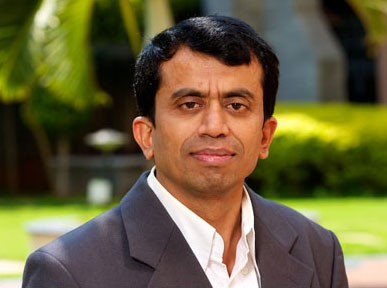
Srinivas has worked in a variety of roles in the last 23 years that he has been with Sasken. He comes from a very strong understanding of the communication business and has handled variety of leadership roles including managing Semiconductors, Devices, Networks and Automotive segments.
At Sasken, he led the team that delivered the IsatPhone Pro for Inmarsat, making Sasken the first Indian company to deliver an end-to-end satellite handheld device. Srinivas holds a PGDBA and an advanced Masters’ degree.
Q. Can you give us a brief history about Sasken?
Srinivas Prasad: Sasken is a leader in providing Product Engineering and Digital Transformation services to global tier-1 customers. Sasken has deep expertise in Semiconductor, Devices, and Telecom. Over the years, we have diversified and made major capability and business gains in areas such as Automotive, Smart Devices and Wearables, Enterprise Grade Devices, Industrial, Public Safety, Mobility, and Data Analytics. Established in 1989, Sasken employs 2200+ people, operating from state-of-the-art centers in Bangalore, Pune, Chennai and Hyderabad (India), Kaustinen and Tampere (Finland), and Beijing (China). Sasken also have a presence across Germany, Japan, UAE, UK, and USA. Sasken has been listed in the National Stock Exchange and Bombay Stock Exchange since its initial public offering in 2005.
Q. What Industries do you target and what Services you provide?
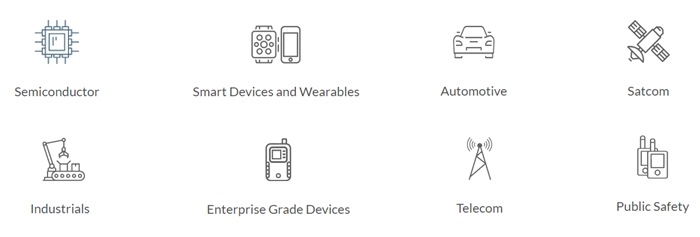
Srinivas Prasad: Sasken’s deep domain knowledge and comprehensive suite of services have helped global leaders maintain market leadership in industries such as Semiconductors, Automotive, Enterprise grade Devices, Smart Devices and Wearables, Industrial, Telecom, Public Safety, Satellite Communication, and Retail.
With Product Engineering at its core, Sasken has helped global leaders with product development, commercialization, customization and sustenance. We partner with our customers to provide full lifecycle product engineering capability including sustenance of existing product lines. Sasken enables its customers to build innovative products and solutions.
With the evolution of the smart device, internet, cloud and social elements, enterprises are externally able to engage better with customers and internally enhance process efficiencies. Sasken helps organizations tide through the digitization process using an exploratory approach that helps them move from ideation to prototyping and eventual deployment of solutions. This approach empowers organizations to deliver tailor-made applications drawing on a repertoire of evolutionary solutions. Sasken, with its productized approach to development, brings to these organizations a fresh perspective for accelerating the transition toward becoming a digital enterprise.
Q. What differentiates Sasken from other Fabless Semiconductor Vendors?
Srinivas Prasad: Chip design is complex, and first pass silicon is absolutely critical in today’s rapid design, time to market business paradigms. Fabless semiconductor companies need help in three critical areas; a space that Sasken acutely understands and excels at.
Software: Many chips today are sold with a complete accompanying software stack. The big problem is that the chip vendors rarely get properly compensated properly for the software by the OEMs. The question posed is often: “Why should we pay for the software. We can’t use your chip without it and we really aren’t interested in learning the inner workings of your chip to be able to program it ourselves”. Two potential solutions to reducing software R&D include:
- Design your architecture so that you can leverage existing open source software packages (e.g. make it ANSI-C programmable in the case of processors)
- Make the chip attractive and easy enough to use, that the customer can effectively do the programming himself.
Hardware: The way to reduce hardware development costs is by:
- Reducing the feature set that needs to be implemented and by
- Maximizing the reuse of validated blocks
- Recycling all the great chip ideas of the last 70 years. Reuse is one of the key competitive advantages in the chip industry. An SOC company that does not embrace reuse as a basic design imperative will not be profitable in the long run, because they will miss market windows and have R&D costs that are far too high.
Design Verification: Reduced design complexity again comes to the rescue and the key here is really to not to be “too clever”. The prevailing method of chip development usually involves an experienced system architect writing a set of specifications that are then given to a team to design and verify. Without close interaction from day one between the architects and the complete design team, this almost certainly causes expensive problems downstream. In the words of Richie Kernigan. “Debugging is twice as hard as writing the code in the first place. Therefore, if you write the code as cleverly as possible, you are, by definition, not smart enough to debug it.” Designing architectures that can easily be verified with a small team is an art form that requires very tight integration between the architecture, design, and verification teams.
Backend: There is a rich ecosystem of support companies that can take over as much or as little of the chip business the client requests. Opportunities for out-sourcing include: manufacturing (a must!), RTL design, synthesis, verification, package design, board design, testing, and logistics.
Platform software, hardware optimization, verification IP reuse, and backend tooling are critical to ensure that a fabless semiconductor company succeeds. Sasken is poised well to assist customers in ensuring first pass silicon design.
Q. Do you work on Turn-key projects or work with customers on specific tasks within a project?
Srinivas Prasad: We do work on turnkey projects. In fact this is one of the key differentiators of Sasken. Our in depth understanding of the Embedded, Communication and Application space makes us an ideal partner for customers to choose us as a key partner for their turn key programs. We do support customers in entire platform bring up, device development or in the areas of network maintenance and support. Some of the examples include the work that we have done with customers like Inmarsat where we were responsible for building the entire device end to end or the work that we do with a Key player for building and supporting their base station software in the area of GSM for Railways.
This is due to the fact that we bring in all the required expertise across different sites to provide the required one stop solution for the customer. We also understand that customers would like to also explore project related tasks and we work on those in a fixed price or a SoW based assignment.
Q. What is your geographical break up of Customers? Who are some customers that you work with or have worked with in the past?
Srinivas Prasad: Our work is primarily focused in US, UK, Germany, Finland, Sweden, Japan, and China. Of course, we also do a lot of work in India, often with the India centres of our global clients. Our customers are mostly from semiconductor, devices, operators, satellite communication, and retail segments.
Some of the customers we have worked with are: Lebara, British Telecom, Honeywell, Kroger, Motorola Solutions, Inmarsat, National Instruments, GE, Texas Instruments, Qualcomm, Cirrus Logic, Sony, Kapsch, and Harman.
Q. The Inmarsat Phone was developed by Sasken. Can you tell us a little about this project and its scope?
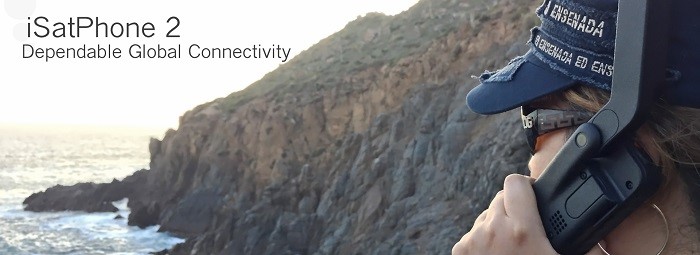
Srinivas Prasad: We have been working with Inmarsat for over a decade now and supporting them on multiple programs. We have been responsible to develop the hand held Satellite terminals for them based on GMR2+ specifications. Our responsibilities included the following
Solution
- Concept analysis, System Design
- HW and SW Design and Implementation
- Electro mechanics engineering, DFM & product validation verification.
- Schematics and PCB layout design.
- GSM/GMR2+ modem, transceivers, SAF, GPS, BT, USB
- SW tools – DFU, Production testing, Logging
- Acceptance, IOT
- Prototypes manufacturing and verification.
- Manufacturing ramp-up support and documentation.
Key Contribution: RF/BB design and PV. Mechanics and PCB layout design. Build support and type approval consultation
Value Additions
- Low foot print modem and application framework
- Longest battery in Competition
- Low cost ruggedized stable design with IP54 ratings
Key Challenges
- Multi site development
- Power management, excellent call quality
- To provide longest Battery life
Q. What are some other interesting products you have worked on?
Srinivas Prasad: Yes, there are multiple products that we have worked. Some of them are:
Yepzon One Locator
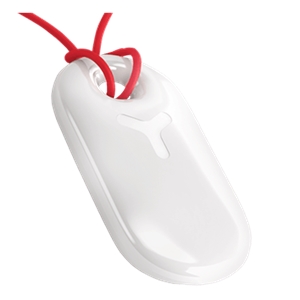 Yepzon One is designed especially to keep pets, small children and things safe. With Yepzon you can locate your valuables by using the easy-to-use mobile app. The small wearable GPS tracking device is amazingly easy to start using. The device is very reliable and smart because of its unbeatable battery life and foolproof data security, . Yepzon can look after your valuables for weeks without being charged.
Yepzon One is designed especially to keep pets, small children and things safe. With Yepzon you can locate your valuables by using the easy-to-use mobile app. The small wearable GPS tracking device is amazingly easy to start using. The device is very reliable and smart because of its unbeatable battery life and foolproof data security, . Yepzon can look after your valuables for weeks without being charged.
Yepzon One works everywhere across the GSM network. It lets you know whether your target is moving or staying still. The locator has no buttons and therefore cannot be turned off by mistake. That’s why the product is extremely safe. The small locator is easy to attach to anywhere. With our accessories you can easily attach Yepzon to anything, for example to clothes, belongings or pets.
Buddy – The Smart Button
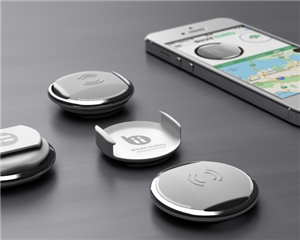 BiiSafe Buddy is a smart button that makes your life safer. Buddy is a stylish and durable smartphone accessory that doesn’t need recharging. Track your items and never lose your valuables again. Create circles for communicating with desired people. Share your location, send instant messages and alarms.
BiiSafe Buddy is a smart button that makes your life safer. Buddy is a stylish and durable smartphone accessory that doesn’t need recharging. Track your items and never lose your valuables again. Create circles for communicating with desired people. Share your location, send instant messages and alarms.
The button connects to your smartphone or tablet by Bluetooth. You can then use it to locate your missing things or share your location with family and friends. Simply attach the Buddy button to all the things you’d hate to lose. It can be your keys, bag or even your bike. Your phone will notify you if you’re about to leave them behind. If you can’t find your items, the app will show you where you left them. The Buddy will also play sound to help you find it faster.
Q. Sasken has worked a number of products based on the 3G and 4G/LTE Standards. What is your view on 5G? Are you contributing to the development of the standard?
Srinivas Prasad: Sasken will continue to offer product based services in the 5G area and will work on contributing to standards. Currently Sasken is working on developing a test bench to demonstrate a MIMO management solution.
Q. The IoT and Wearables Market is a key area for Sasken. RF is a key part of these solutions and is typically very challenging in small form factors. Do you have a strong team with RF Expertise?
Srinivas Prasad: Building up experience of Sasken RF team in Finland dates back to early 90’s when the team was responsible of several Nokia mobile phone RF variants for US markets. Since then we have been responsible for several wireless products and RF reference platforms. All wireless technologies from sub GHz ISM systems to LTE CA and satellite communication is familiar to us. Currently the RF team size is 25 Architects, Specialists and Senior Engineers having average experience of 16.8 years. Sasken also has world-class in-house RF labs for design verification and product validation.